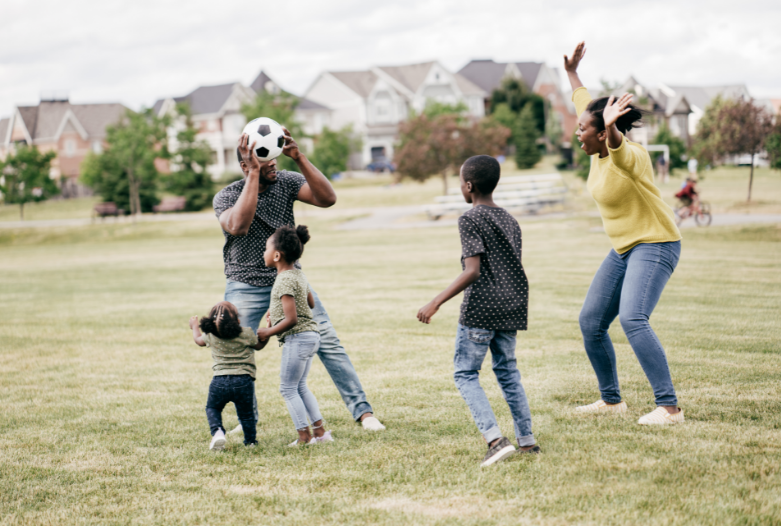Why do parents often fear rough and tumble play? Aside from the physical worry that we might injure our child, there is that nagging feeling that rough play might decrease our child’s body boundaries. However, children are remarkably resilient, and as long as we set clear rules and practice safe play, we can reap all the benefits that rough and tumble play brings.
Rough and tumble play, also known as roughhousing or horseplay, is a type of vigorous activity that includes aspects of power-play or play fighting. It involves two people – a parent and child – who use their bodies to play instruments. Occupational therapists warn against roughhousing that purposely harms or inflicts pain in the name of the play, which is why it’s important to understand the role of tumble play in parenting and how we can do it safely.
Consider these three reasons for parenting using rough play:
1. Better parent-child communication
Whether it’s structured or unstructured play, a parent’s role is to set boundaries. However, we often make our children feel disempowered whenever we say “No”. Adding rough and tumble play where they are allowed to wrestle, piggyback or jump on the bed can encourage a good relationship.
Furthermore, roughhousing can teach children about reading social cues through non-verbal communication. Interactions like leaning in or pulling away can be confusing to a toddler, but if they see it consistently through play, they are more likely to develop other skills related to body language.
2. Heightened body awareness
There’s no guarantee that children will never have a knocked knee or a bumped head, but roughhousing doesn’t aim for that. Knowing when to stop is the first rule when we encourage physical play but a child will always find a reason to keep going.
If a child starts to sweat and becomes out of breath, that is a signal that their body is releasing energy. If a child steps on a LEGO brick while playing, it’s a good opportunity to teach them about spatial awareness and the importance of maintaining a safe playground. Roughhousing can bring about better body awareness and sensory processing critical to a child’s early development.
3. Alleviate aggression
Forms of physical touch like cuddles and hugs are important, but sometimes, a good bout of horseplay can also do the trick. Children respond to play a lot more easily than other activities, but parents should consider dominating these play sessions to improve the child’s emotional control.
A 2009 scientific study about father and child relationships revealed that rough and tumble play helps manage aggression as well as symptoms of ADHD among kids. If a parent-child relationship needs more attention, either due to separation or blended family dynamics, roughhousing can ease the process tremendously if done safely and appropriately.
Safety rule: Adults need to lead
Parents frequently allow children to take the lead in various forms of play, but as adults, we have the capacity and obligation to control the situation when it comes to physical play. When we let actions like grabbing, kicking, or squeezing get out of hand, our children will perceive these as acceptable behaviors which we want to avoid. We should strive to help children grow into compassionate teenagers in their school years by promoting healthy boundaries and good communication habits for a strong family relationship.
Sources:
https://partnershipsforearlylearners.org/2019/05/09/rough-and-tumble-play/


